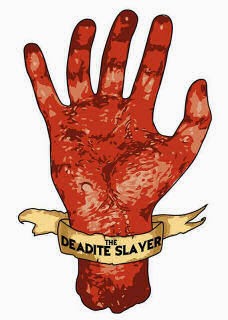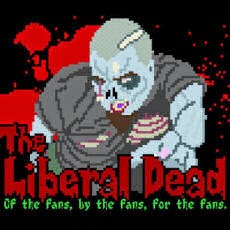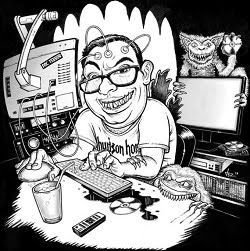By: Tristan Collett
From the tribal, middle
eastern-inspired opening bars of Graeme Revell’s score, hovering over a
tapestry of burning buildings, it is clear that the soundscape of The Crow is
as integral to the character of the film as its visuals. However, along with
this orchestration, the nocturnal urban setting is perfectly complimented by a
carefully chosen rock soundtrack.
When I went to see the
film adaptation of James O’Barr’s graphic novel in 1994, it felt like the first
time alternative rock culture was represented on a decent-budget movie. To
blend with the comic book dark fantasy, The Crow took cues from the 80s goth
music scene, reviving its influence. It may even be to blame for late 90s metal
going on to embrace such a morbid, theatrical visual style. The dark rock soundtrack was,
of course, fitting, seeing as the source material’s character was influenced by
cultural icons such as Iggy Pop and Bauhaus lead singer Peter Murphy.
Music is everywhere
throughout this movie, whether incidental in the background (such as ‘Big
Empty’ by Stone Temple Pilots and ‘Snakedriver’ by The Jesus and Mary Chain);
more deliberately present to set the mood for the scene (in the menacing
‘Golgotha Tenement Blues’ by Machines of Loving Grace, for example); or even
actually helping drive the narrative. The soundtrack feels almost like another
character in the movie.
The
Crow provides a great example of how well music can be used in a film. Certain
moments feel like set pieces designed around the music and are all the more
impressive for it, gelling image and soundtrack perfectly. When the recently resurrected
Eric Draven remembers his lost lifetime, he channels his rage, transforming
into the avenger. ‘Burn’ by The Cure, an original song written for the film,
gives songwriter Robert Smith licence to his interpretation of our protagonist. Everything about this tune
is hauntingly beautiful, depicting Eric’s character transition perfectly -
consumed by grief, lost love and anger: “Every night I burn, Scream the animal
scream, Every night I burn, Dream the crow black dream”.
As he realises his mission,
Eric chases the crow across the rooftops to his first revenge kill. For this
sequence, the truly inspired choice of Nine Inch Nails’ cover of original goth-rockers
Joy Division’s ‘Dead Souls’ is used. This choice is validated by O’Barr having
credited Joy Division as having particular influence on him throughout his
writing the book. A song this slow shouldn’t
work, but the relentless trudge of the rhythm section mixed with the drive of
the faster power guitars allow Eric to keep pace. The lyrical mantra “they keep
calling me” replaces the need for an expository monologue. Director Alex Proyas
knows when to let the film breathe with the music.
The
introduction to the main antagonist’s club hangout is accompanied by the raw energy
of a live performance. As T-Bird and Skank walk into The Pit, shoegaze band
Medicine are playing ‘Time Baby III’. The fact that you can feel it has been
recorded live gives a gritty realism to the world, subconsciously pulling the
viewer even deeper into the story.
As the film reaches its
final act, ‘After The Flesh’ by My Life With the Thrill Kill Kult brings us
back into the villain Top Dollar’s lair, building the tension for the imminent
conflict. A frenetic live performance from the band on the lower floor level
stage is intercut with preparation for the violence of the Devil’s Night arson
attacks. This board meeting is interrupted by the titular supernatural crow and
indestructible Eric, erupting into a systematic slaughter of the mob in order
to reach the next target, Skank. The techno-infused rock accentuates the chaos,
heightening its impact. As one of the henchmen is catapulted down into the club
level, crashing into the stage, the music stops and the tone changes.
Purposefully, this emphasises that this is no time for a rock video to
glamorize the violent, vengeful proceedings.
For the closing credits, ‘It
Can’t Rain All The Time’ provides a softer bookend to the story, borrowing from
one of Draven’s fictional songs within the film itself. Although more
commercial-sounding than any of the other music in the film, the bittersweet
lyrics sung by Jane Siberry and the acoustic instrumentation give the much-needed
break the audience needs from the melancholia of the previous 90 minutes.
The soundtrack to The Crow worked against the odds.
Although prolific use of alternative rock in a movie’s soundtrack is commonplace
nowadays, back in 1994 it was a risk. The song choices
did not come from as much of a commercial standpoint as most examples of its
day, free reign seemingly having been given to Alex Proyas when directing. When
watching the film, it feels that Proyas successfully created a mutual trust
between himself and the intended counter-culture audience, which remains over
20 years on.

















